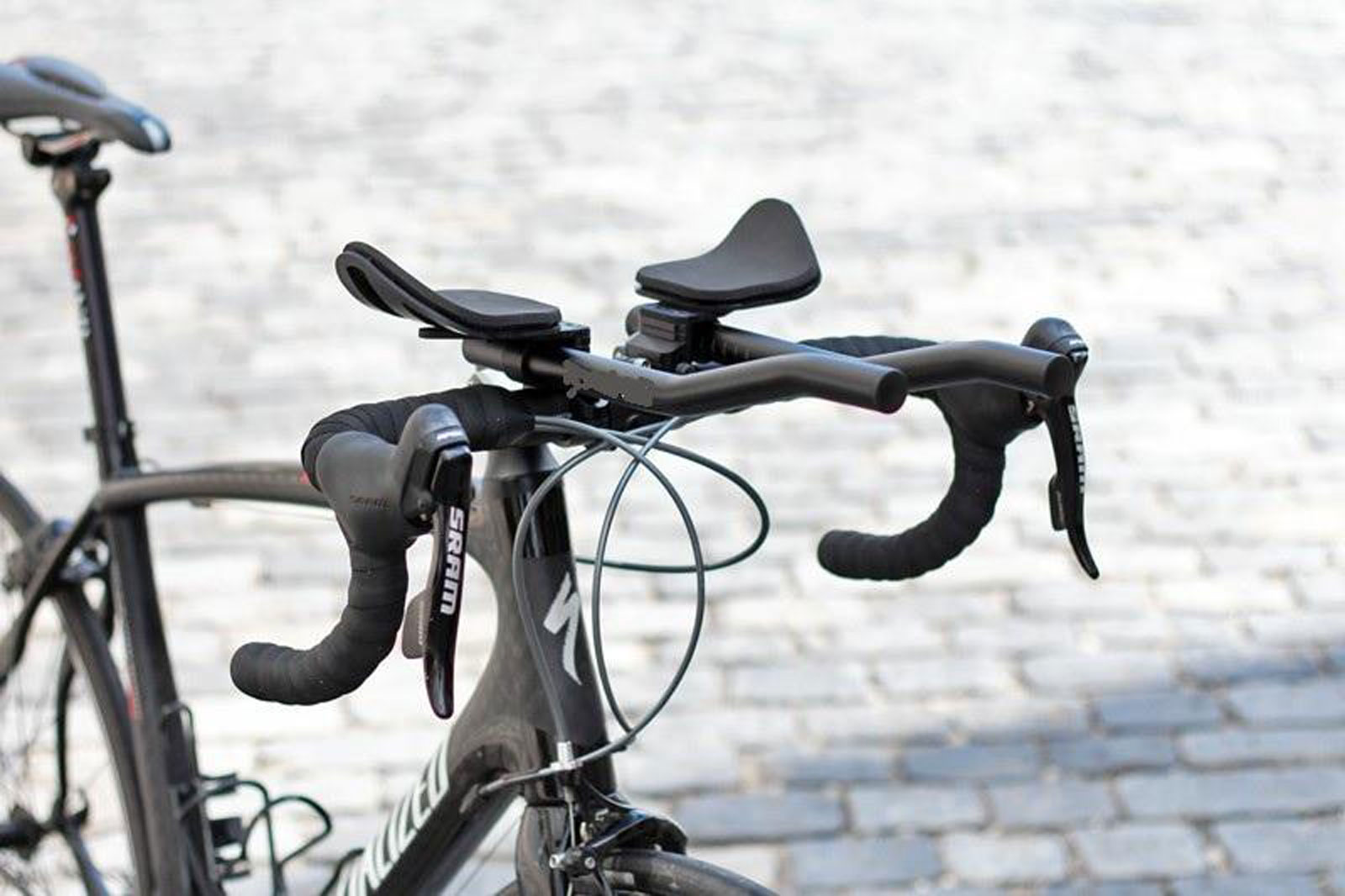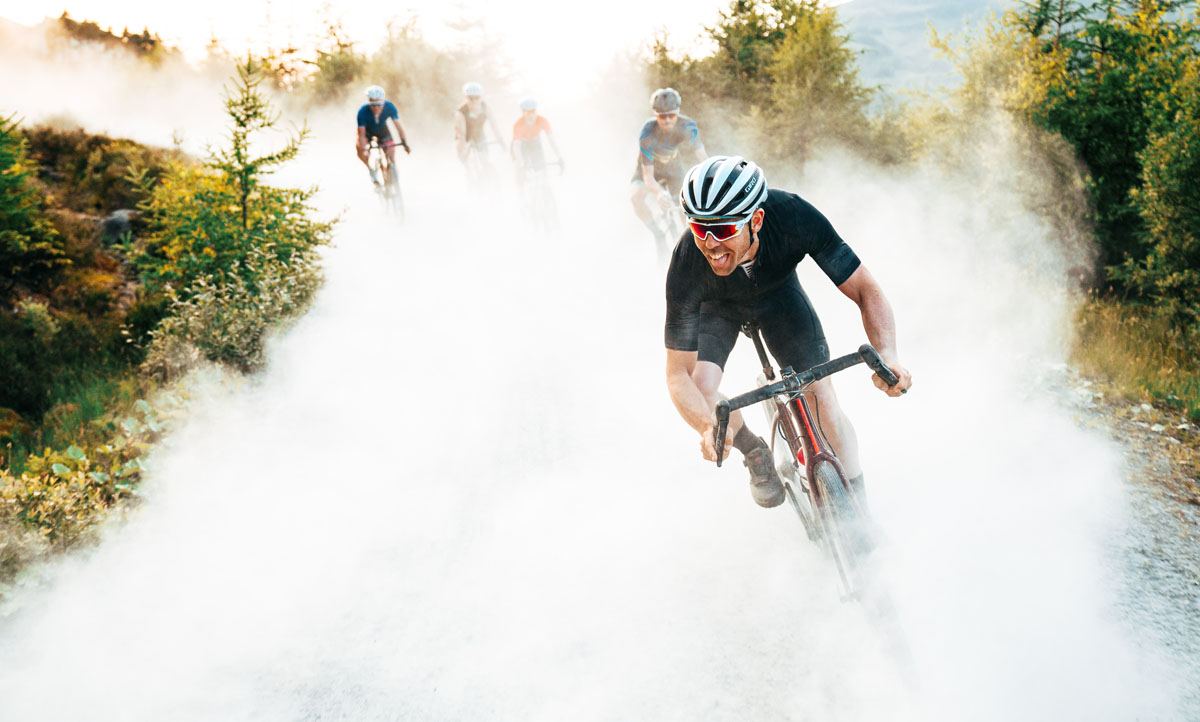We know, there’s no such thing as a stupid question. But there are some questions you might not want to ask your local shop or riding buddies. AASQ is our weekly series where we get to the bottom of your questions – serious or otherwise. Hit the link at the bottom of the post to submit your own question.
Welcome back to the Bikerumor Ask A Stupid Question series. This week we delve into aerodynamics, taking a look at which bike components offer the best bang-for-buck drag reduction to improve the aerodynamics of a regular road racing bike. Where is your money best spent? Is it on the wheels, at the handlebar, the fork, or is it actually better spent on improving the aerodynamics of you, the rider? Joining us this week are:
- Jean-Paul Ballard, CEO and Co-Founder of Swiss Side
- Gillian Jakob, Brand Manager at Cervelo
- Scott Stroot, Retül Fit Guru at Roval Components
Finally, we also have Sam Pendred joining us from Hope Technology, designer of the Hope HB.TT, a road-worthy version of the Olympic Track Bike built for the British Cycling Team that competed in Tokyo. Though he can’t comment specifically on what gains different components offer, he is able to give an unusual insight into how aerodynamics was considered in the design of the HB.TT.
Which bike parts offer the best opportunity for improving the aerodynamics of a bike? In terms of Watts saved, where is my money best spent in terms of upgrades? I’ve a standard road bike that I’d like to use for time trial racing.
Swiss Side: Even as a wheel brand, we’d be lying if we said that wheels offer the biggest aero gains. They are super important and high up the list but not at the very top. To answer this question, we need to look at the total bike and rider system and which parts of this system contribute the most drag. In road cycling, the rider is around 75% of the total aero drag, so this is our first point of call.
The rider position makes the biggest difference and costs nothing. The difference between the ‘cafe position’ (top bars, hands in the middle, straight arms) and an aero position with arms bent with hands flat on the hoods, is around 40W at 35km/h (85W at 45km/h). So, the biggest bang for buck is your yoga class to build core strength to ride lower positions for longer.
The next biggest influencer is rider apparel. A snug fitting one-piece aero suit can bring 14W at 35km/h (30W at 45km/h). Add winter gear and these numbers double again. So, being conscious of what apparel you choose is very important.

Next up are indeed the wheels. A good set of aero wheels deliver in the order of 7W at 35km/h (15W at 45km/h) over a normal set of stock low profile aluminum wheels. And, this benefit increases significantly when there is wind about due to the “sailing effect”. A good front wheel can actually generate thrust (negative) drag if the wind is right.
Helmets also provide plenty of potential in road cycling (and time trial). Between a good aero-road helmet and a simple heavily ventilated non-aero helmet, we have measured differences up to 5W at 35km/h (10W at 45km/h).

Of course, last but not least is the complete bike frame. This is however a big investment and not really ’tuning’. The difference between a standard frame and a top level aero-road bike frame can be up to 20W at 35km/h (43W at 45km/h). This is not including the aero wheels.
Cervelo: The single most effective upgrade is body position. Purchase a set of clip-on aero bars if you haven’t already (these don’t have to be expensive, round alloy ones will do just fine).

If you’ve not had a professional fit (either in person or with a number of great apps) it’s worth the investment. Not only will this ensure you’re physically in the best position for your body shape, but also that you’re able to comfortably hold that position, which is arguably more important.

Another low hanging fruit is clothing; you don’t need to go out and find the most expensive skin suit available, just ensure that everything is tight fitting once you’re in the correct position. If it’s a flat course and you’re comfortable with your power output, remove the front derailleur and run the bike 1x.
If it’s a longer course and you need hydration, look at bottles and cages that fit between the arms (clip on aero bar bottle cage) or behind the seat. And finally, tyres and wheels. This will take some serious investment but it’s a fundamentally important next step.

Wheel aerodynamics can easily take up its own article but, in short, look for the right balance between stability, weight and aero performance; narrow and deep for the rear wheel, wide and shallower for the front (if your frame can accommodate it). Ensure that the tyre you choose (brand and width) matches the wheel profile.
Roval: Within Roval’s arsenal of equipment, the rider looking for the best bang for his/her buck when it comes to aero gains on a road bike should think about their leading edge. Obviously, it’s no secret that wheels are a huge aero upgrade.

Common knowledge has been deeper is faster for a TT, but with our Rapide wheel we focused not only on a super aero 51mm deep front wheel, but ensuring that speed came with the stability necessary to use it – 25% more stable in a crosswind than our CLX50.

We also recommend our Roval Rapide bar, offering a 20 second saving over a round bar, with aero details like a recessed step to ensure your bar wrap is flush with the tops and internal cable routing. Another key bar stat to keep in mind when looking for aero gains is width. I’m sure you’ve seen how many pros are going narrower and narrower. It is to reduce the frontal area of your body, and really improve aero.
This obviously leads to the overall importance of fit. We asked our Retül fit Guru, Scott Stroot, his thoughts and he said, “Aero bikes and aero components are most helpful if you are positioned in the most aero position your body can hold at the highest amount of power for an extended period of time. If you are not positioned well you can be losing power, aerodynamics or both. This is why a Retül fit is so essential to riders maximizing aerodynamics and power.”
If you’re riding your standard road bike in a TT or off the front w/o aero bars our WinTunnel engineer and Body Geometry Research manager said, “Simply adjusting your body position into a crouched position on the hoods or drops will improve aerodynamics. Crouching so that a rider’s forearms are flat/parallel to the ground can improve aerodynamics in the range of 6-12 W at 40 kph depending on the initial, non-crouched position.”
When it comes to aero gains with equipment across the spectrum wheels, clothing and helmet are the top 3 bang for your buck purchases.
Sam Pendred, designer of the Hope HB.TT:
- Working on developing the HB.TT further and because of the radical design, we are trying things in the wind tunnel that “usually” give riders a big gain – but the design of this bike can be counter intuitive. We have seen improvements by doing things that would normally be worse for aerodynamics (rider position, especially).
- Working heavily on parts that other brands don’t have the interest/capability to manufacture. Components can be a very interesting one, like the front caliper on the HB.TT – a brand new caliper design that sits perfectly to the fork and behind the axle of the front wheel, with not a single section of exposed hose. We are looking at doing other interesting things like this with more components in the future.
- Manufacturing capability. This is a big stumbling point for lots of designs where the design is great but you can’t find a way to make it. With everything done in house here at Hope from mould/component machining – to laminating the composite products – finishing & assembly. We have total control over the whole process and it allows us to push it further and try new complex designs (usually) with high levels of success.

Got a question of your own? Click here to use the Ask A Stupid Question form to submit questions on any cycling-related topic of your choice, and we’ll get the experts to answer them for you!






